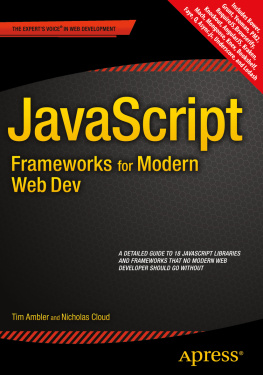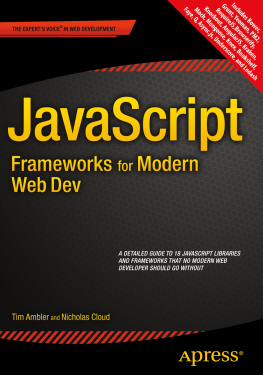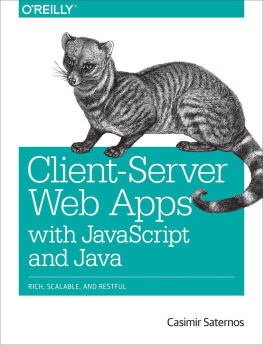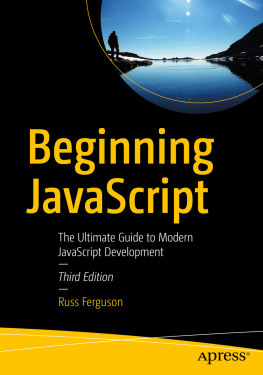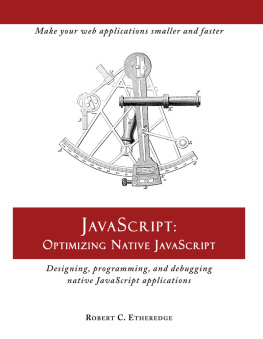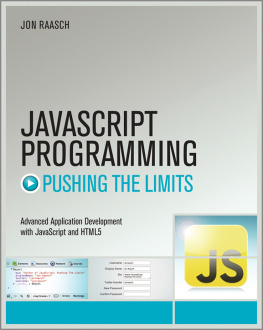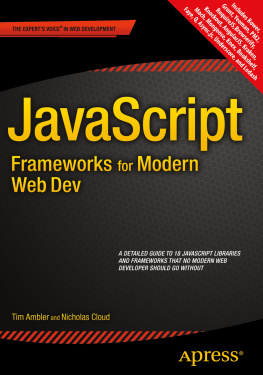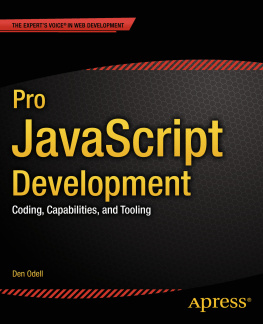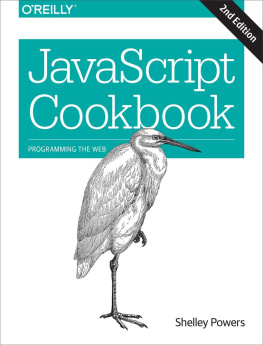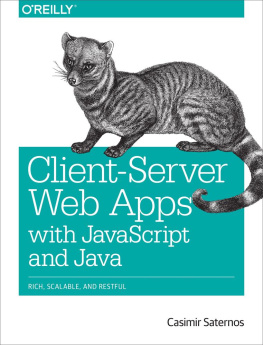Tim Ambler - JavaScript Frameworks for Modern Web Dev
Here you can read online Tim Ambler - JavaScript Frameworks for Modern Web Dev full text of the book (entire story) in english for free. Download pdf and epub, get meaning, cover and reviews about this ebook. year: 2015, publisher: Apress, genre: Computer. Description of the work, (preface) as well as reviews are available. Best literature library LitArk.com created for fans of good reading and offers a wide selection of genres:
Romance novel
Science fiction
Adventure
Detective
Science
History
Home and family
Prose
Art
Politics
Computer
Non-fiction
Religion
Business
Children
Humor
Choose a favorite category and find really read worthwhile books. Enjoy immersion in the world of imagination, feel the emotions of the characters or learn something new for yourself, make an fascinating discovery.
- Book:JavaScript Frameworks for Modern Web Dev
- Author:
- Publisher:Apress
- Genre:
- Year:2015
- Rating:3 / 5
- Favourites:Add to favourites
- Your mark:
JavaScript Frameworks for Modern Web Dev: summary, description and annotation
We offer to read an annotation, description, summary or preface (depends on what the author of the book "JavaScript Frameworks for Modern Web Dev" wrote himself). If you haven't found the necessary information about the book — write in the comments, we will try to find it.
JavaScript Frameworks for Modern Web Dev is your guide to the wild, vast, and untamed frontier that is JavaScript development.
The JavaScript tooling landscape has grown and matured drastically in the past several years. This book will serve as an introduction to both new and well established libraries, frameworks, and utilities that have gained popular traction and support from seasoned developers. It covers tools applicable to the entire development stack, both client- and server-side.
While no single book can possibly cover every JavaScript library of value, JavaScript Frameworks for Modern Web Dev focuses on incredibly u
seful libraries and frameworks that production software uses. You will be treated to detailed analyses and sample code for tools that manage dependencies, structure code in a modular fashion, automate repetitive build tasks, create specialized servers, structure client side applications, facilitate horizontal scaling, and interacting with disparate data stores.The libraries and frameworks covered include Bower, Grunt, Yeoman, PM2, RequireJS, Browserify, Knockout, AngularJS, Kraken, Mach, Mongoose, Knex, Bookshelf, Faye, Q, Async.js, Underscore, and Lodash.
Written from first-hand experience, you will benefit from the glorious victories and innumerable failures of two experienced professionals, gain quick insight into hurdles that arent always explicitly mentioned in API documentation or Readmes, and quickly learn how to use JavaScript frameworks and libraries like a Pro.
Enrich your development skills with
Tim Ambler: author's other books
Who wrote JavaScript Frameworks for Modern Web Dev? Find out the surname, the name of the author of the book and a list of all author's works by series.

